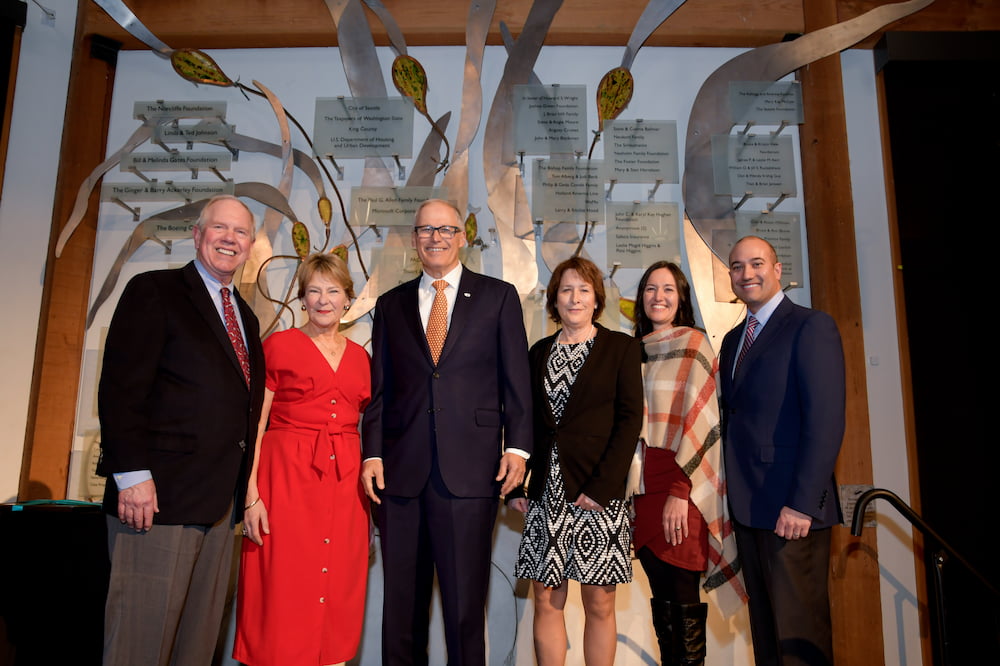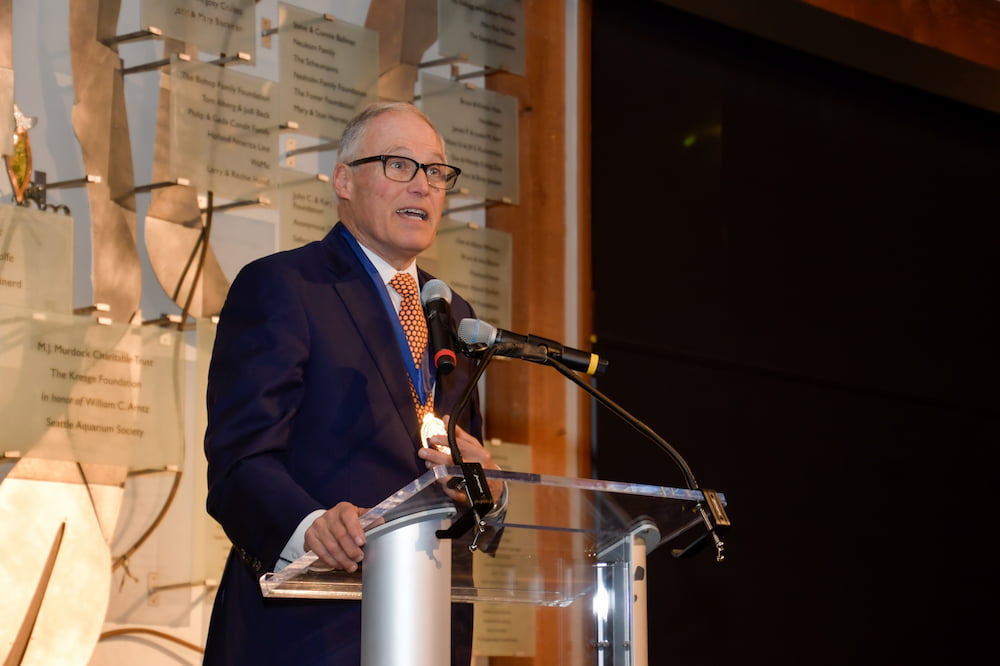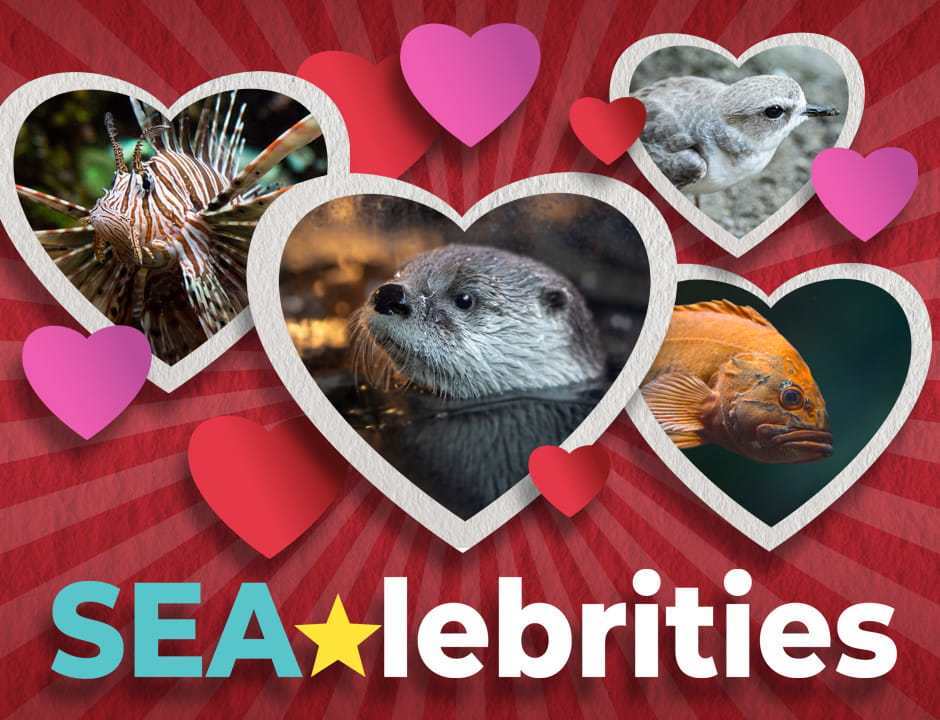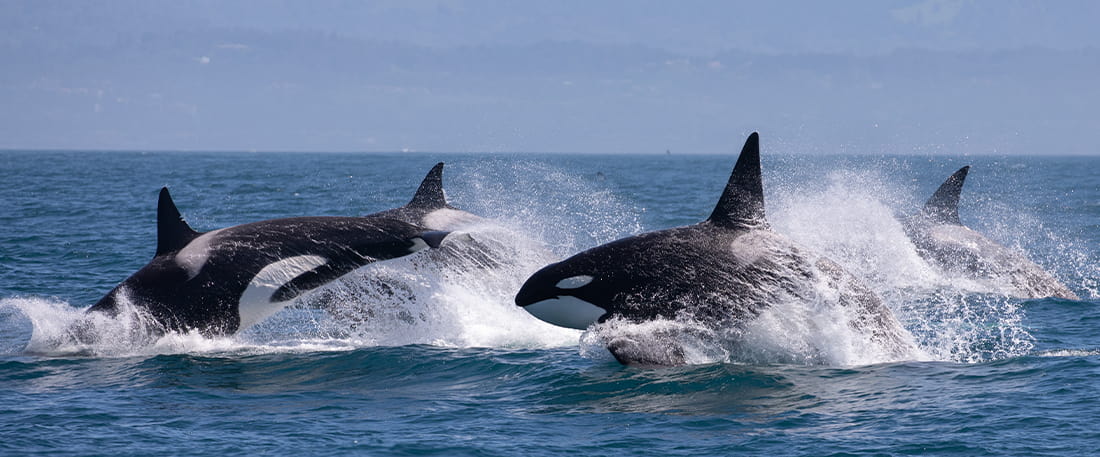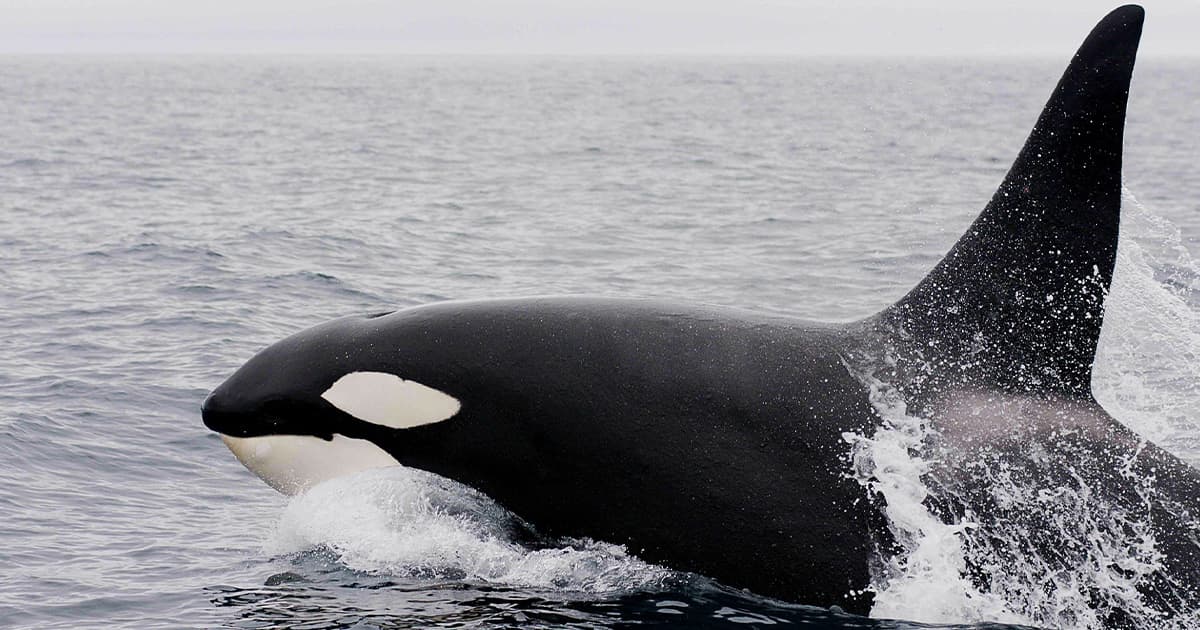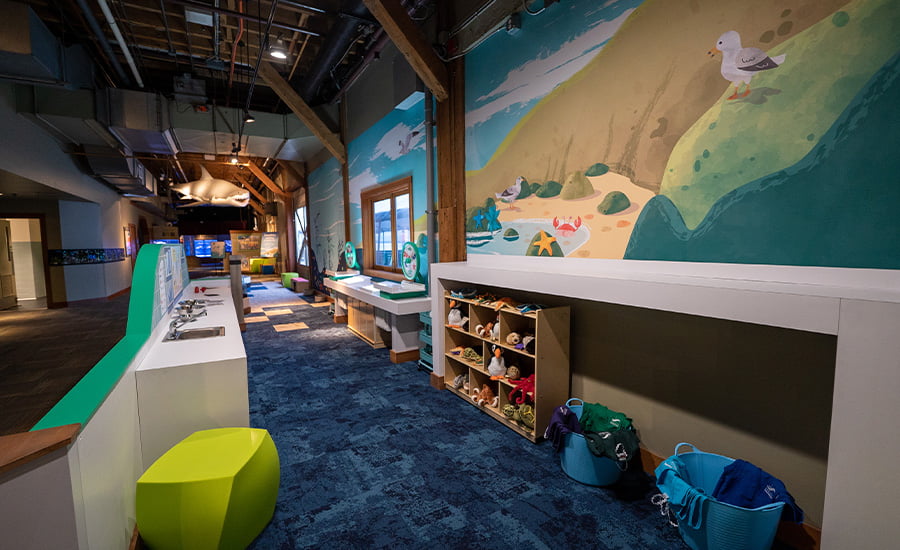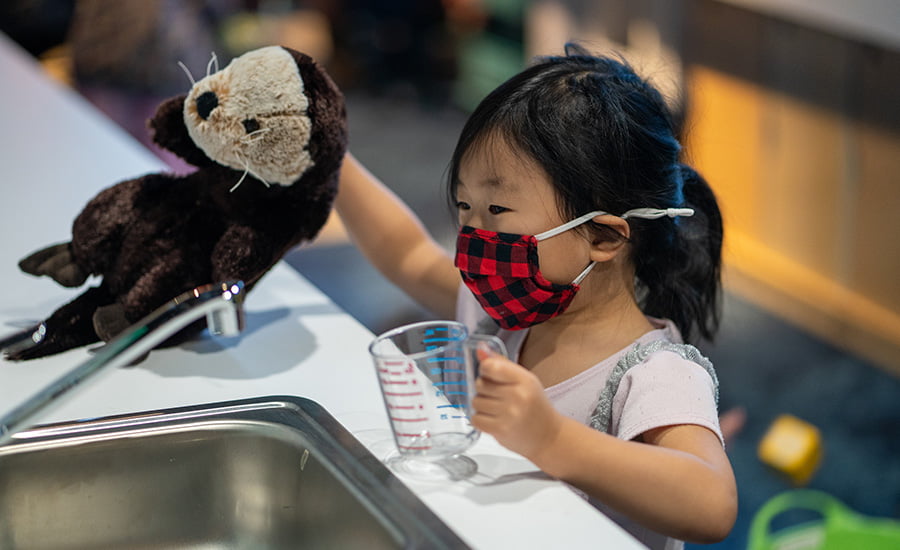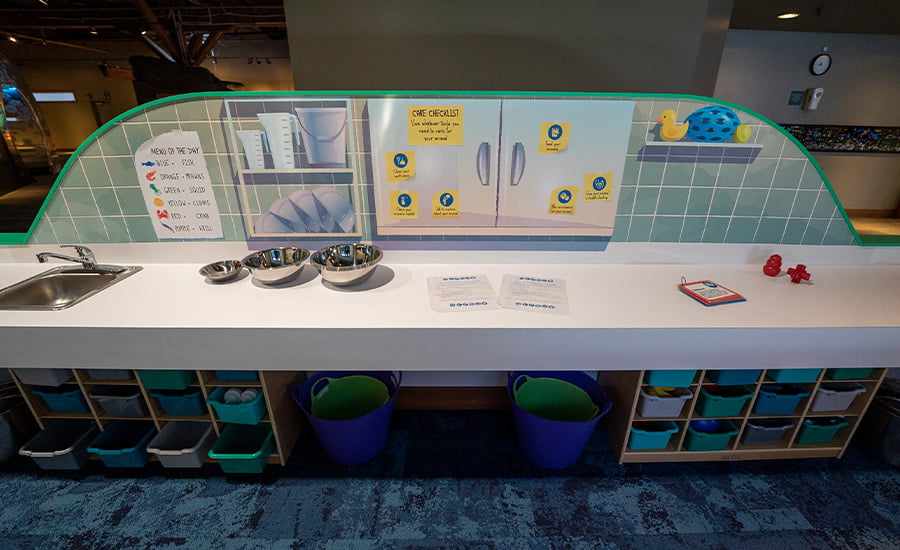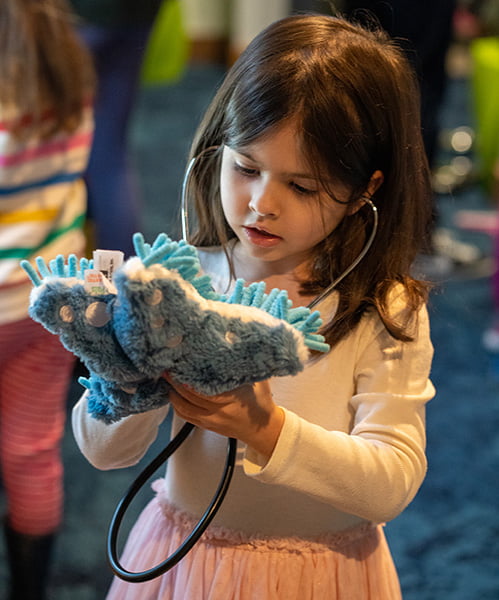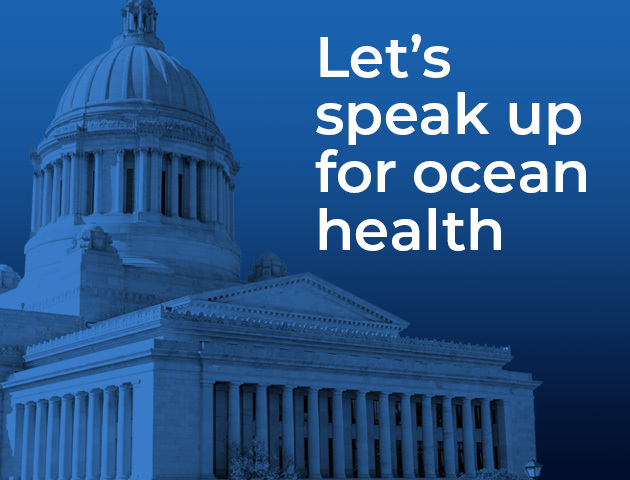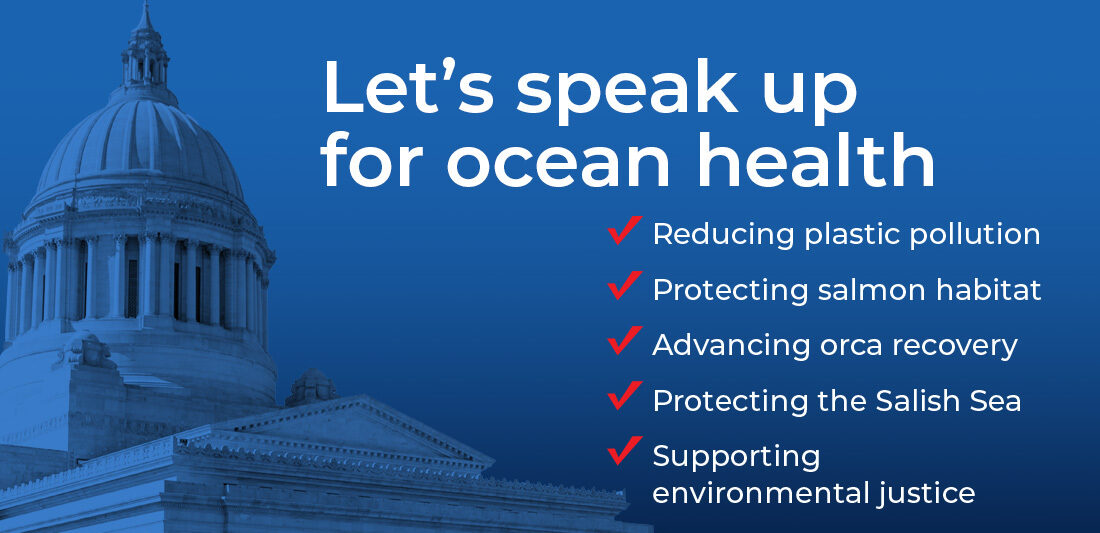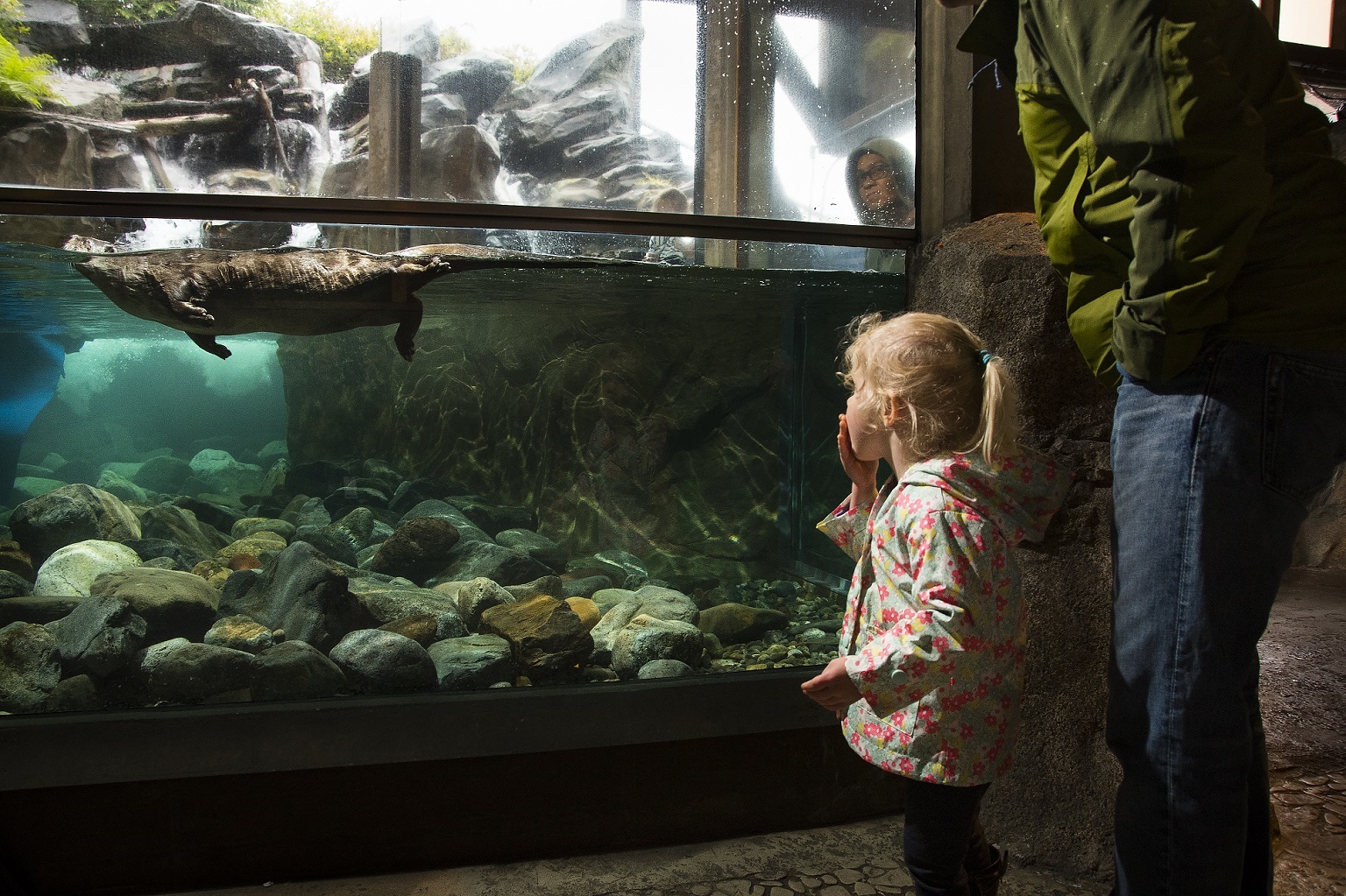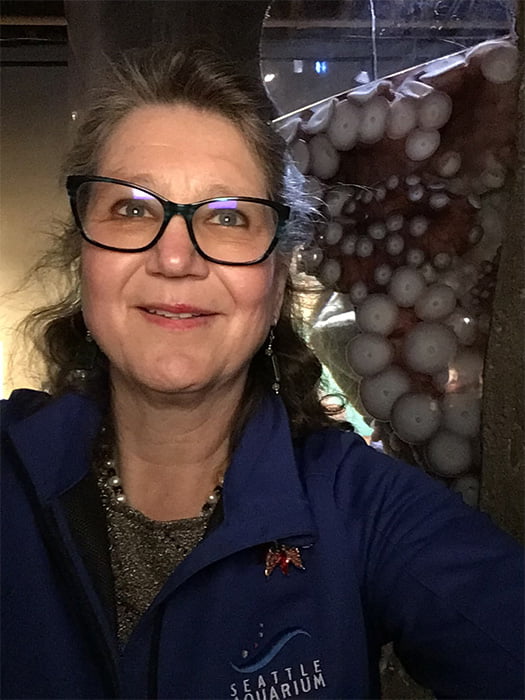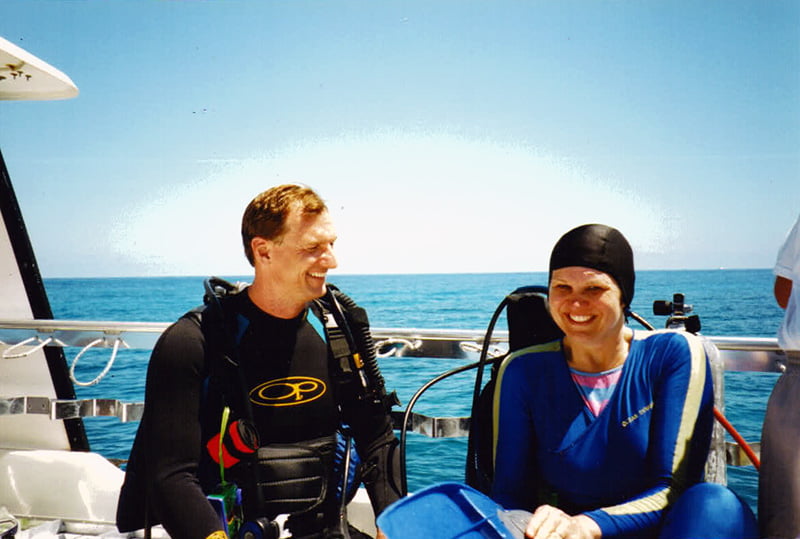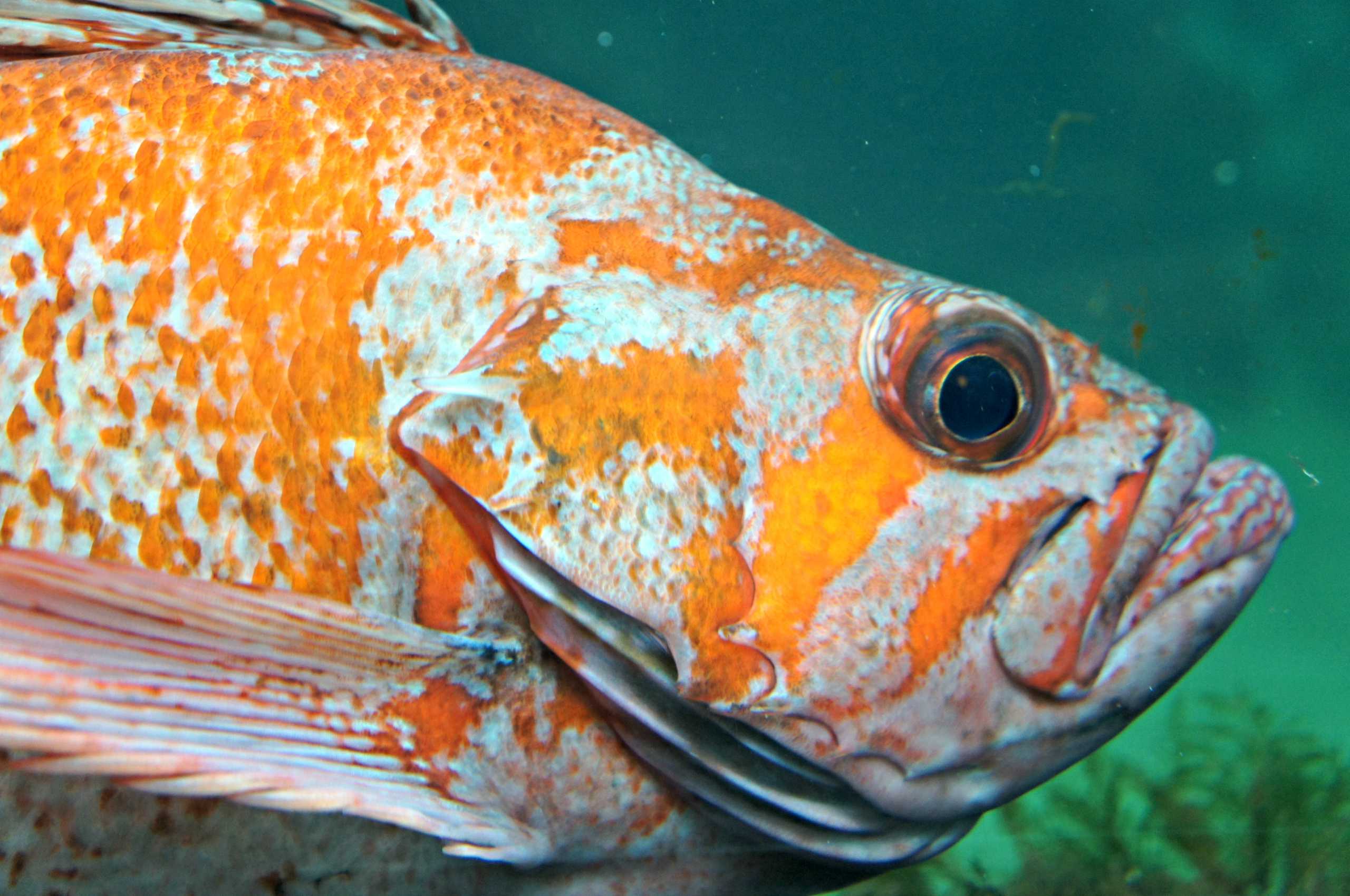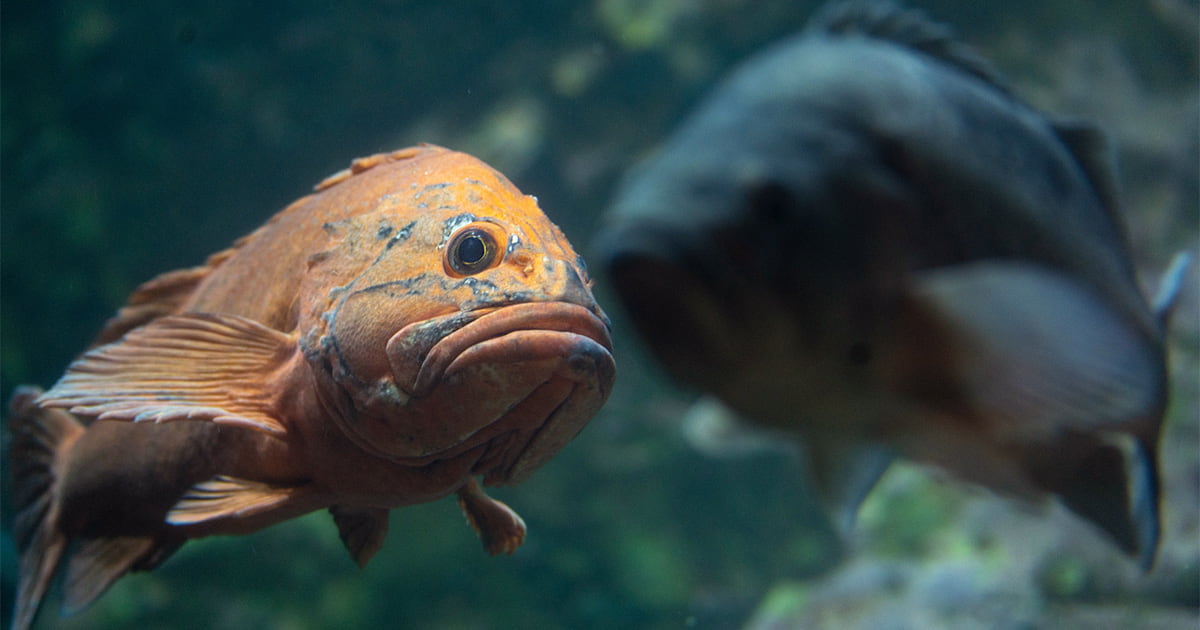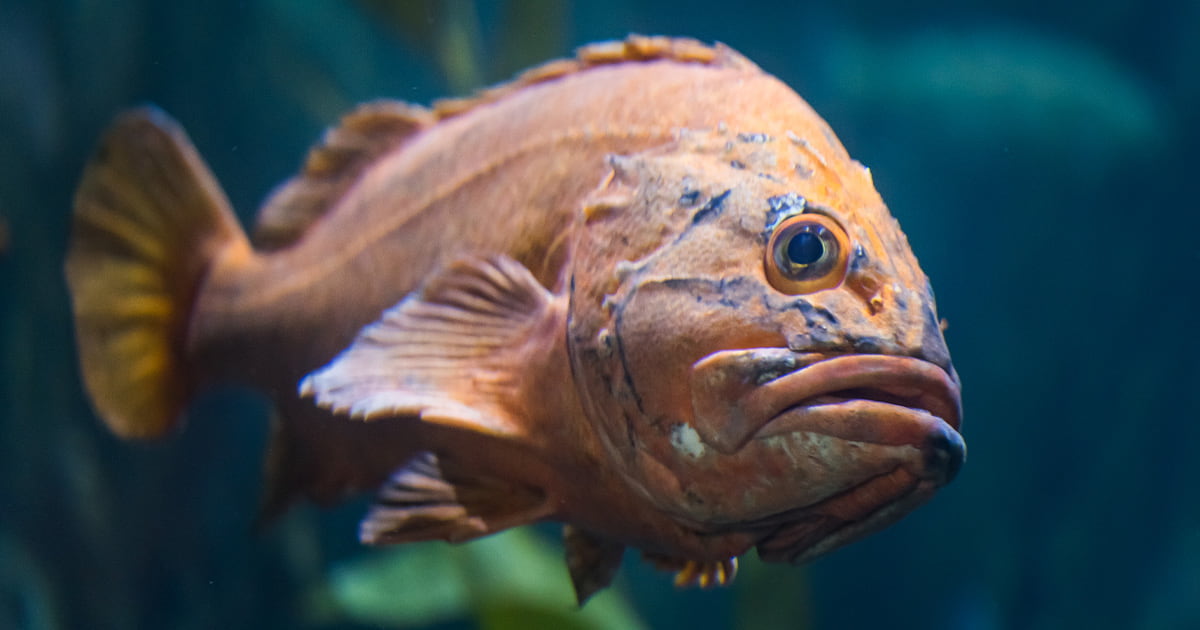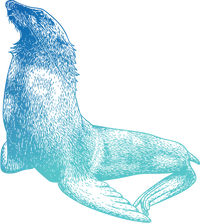Field research becomes fur seal rescue on Washington’s outer coast
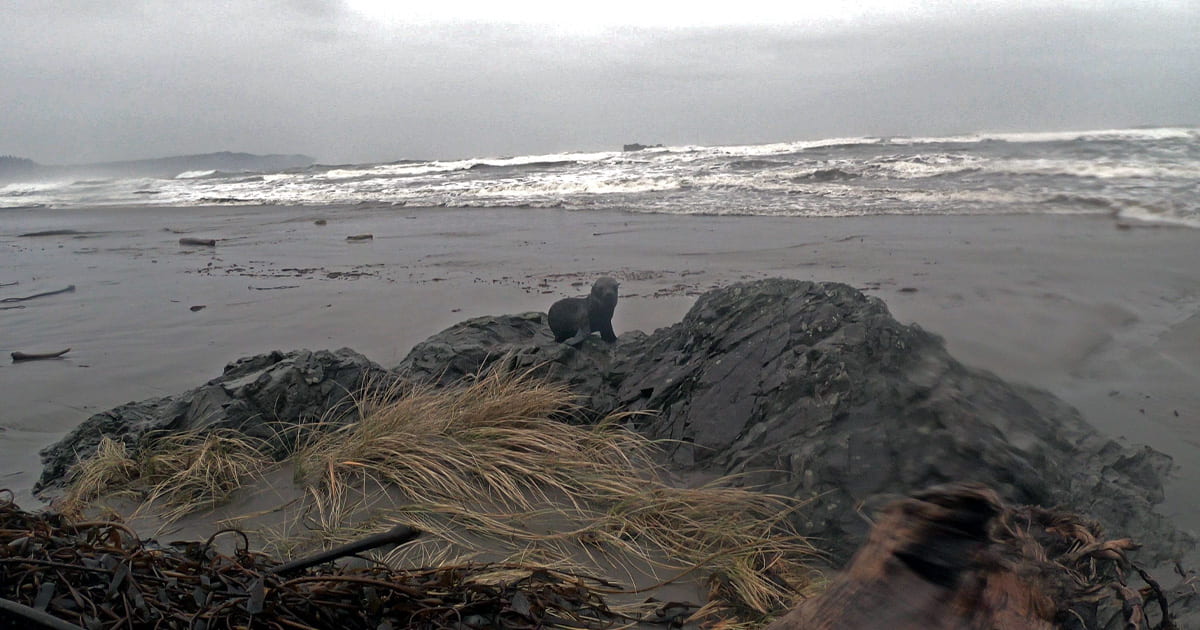
On a wet and windy day in January, a field research excursion that almost didn’t happen ended up being a life-saving experience for a young fur seal pup.
Seattle Aquarium Senior Conservation Research Manager Dr. Shawn Larson looked at the weather forecast—predicting high seas, rain and high winds—and almost called off the trip to Sand Point, a remote beach on the Olympic Peninsula. She and Seattle Aquarium Research Scientist for Clean Seas Veronica Padula had planned to meet a team from the Oregon Coast Aquarium, Curator of Marine Mammals Brittany Blades and Senior Mammologist Ashley Griffin-Stence, to observe sea otters as a training exercise and part of our ongoing research on the species.
But Brittany and Ashley were already on their way, so Shawn and Veronica headed out with their heavy rain gear. The group met at the trailhead, hiked three miles to the beach and, despite the weather and a very high tide, were rewarded with the sight of many sea otters in the water offshore, including mothers and pups.

“You could tell something was wrong.”
Suddenly, all four women noticed a cry of distress and started searching the water for a sea otter pup in need of its mom. Then they realized that the sound was actually coming from the beach behind them. They turned, followed the cries and discovered a young northern fur seal pup.
“In my 22 years of doing this work, I’ve never seen a northern fur seal pup on the beach,” says Shawn. Adds Veronica, “You could tell that something was wrong with it. It looked like it was struggling somehow.”
When they got closer, the group realized that the pup was entangled, with material wrapped tightly around its neck. They knew what to do: call the National Oceanic and Atmospheric Administration (NOAA) West Coast Marine Mammal Stranding Network.

Typically, when a marine mammal is reported stranded or injured, a Network partner responds to assess the animal and determine the best course of action. But given the remote location, it would have taken responders many hours to arrive on scene—and, in a very happy stroke of luck, all four women are marine mammal biologists with specific experience handling and rehabilitating entangled fur seals.
“This time of year, no one goes down there,” says Shawn. “No one else would have known what to do in that situation.”
Springing into action
Shawn, with a single bar of service on her phone, managed to complete the call and was given authorization from NOAA officials to disentangle the pup. Using a pair of scissors from her first aid kit, she swiftly cut the material—a loop of elastic, similar to what you’d find in a garden glove, stretched to its limit around the animal’s neck—while Brittany and Ashley secured its body.
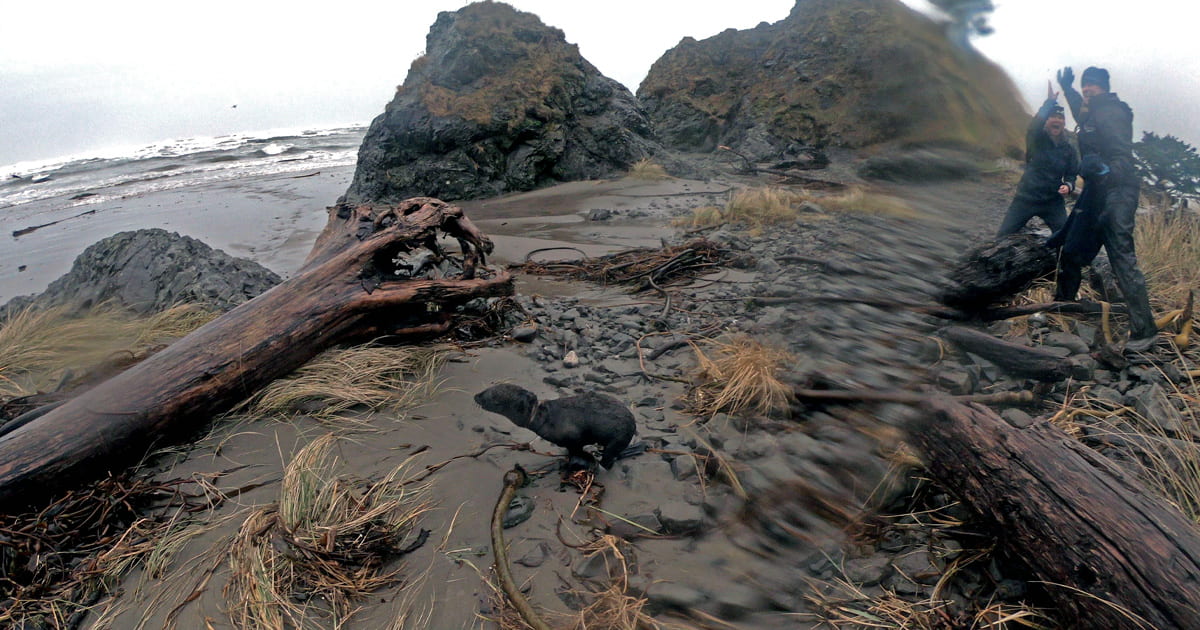
“If we hadn’t been able to remove the elastic, the animal likely would have died,” says Shawn. “He was already starting to look a little lean, an indication that he wasn’t able to eat well, and the material could have also restricted his breathing.”
Once freed, the pup quickly made his way to the water—where, we hope, he will live a long and happy life.
Northern fur seals, listed as vulnerable by the International Union for Conservation of Nature, spend the majority of their lives at sea, coming ashore only for the summer breeding season on islands in the icy waters of the North Pacific and Bering Sea—or in other, more southerly locations if they’re injured or ill. Interested in learning more about them? Check out our webpage or, better yet, come visit northern fur seals Chiidax and Flaherty at the Seattle Aquarium!
